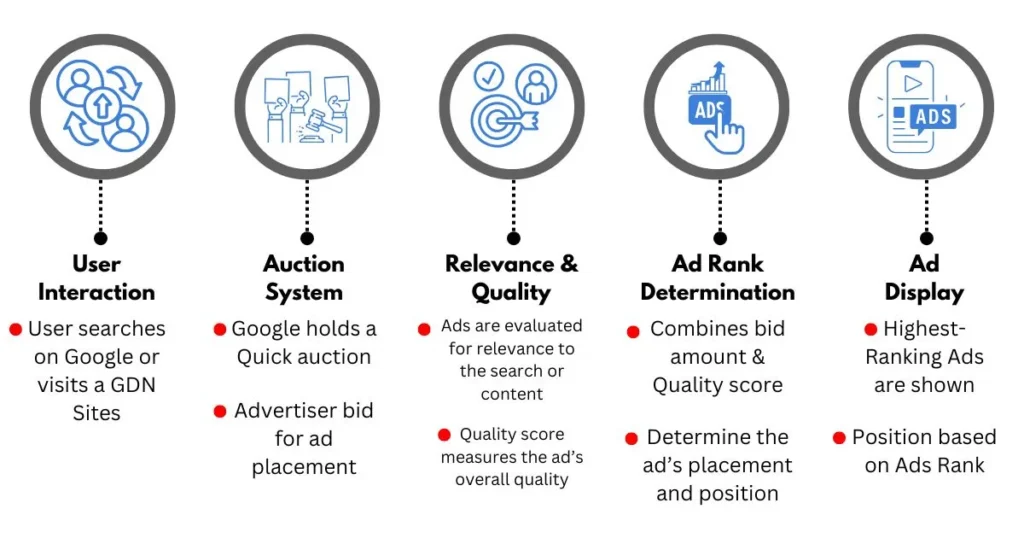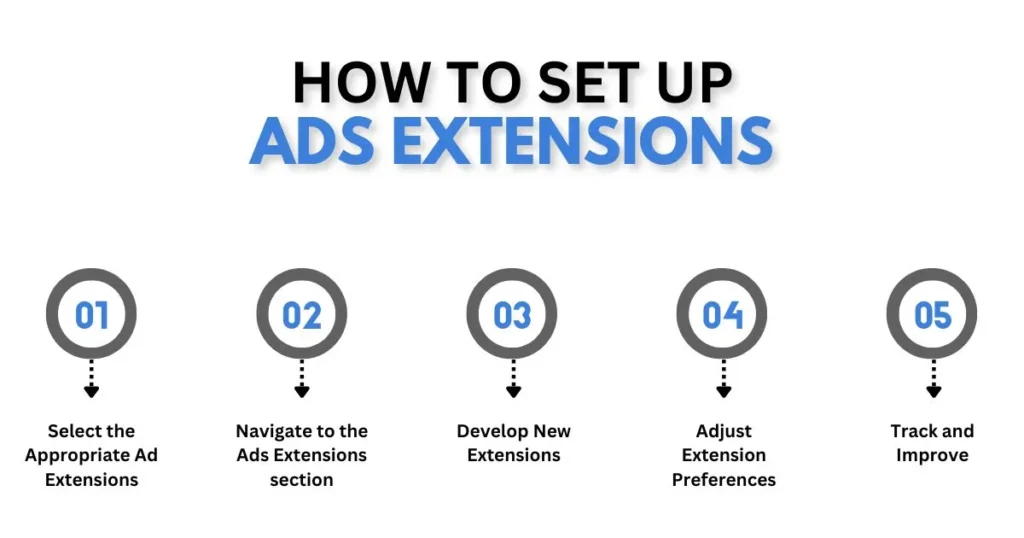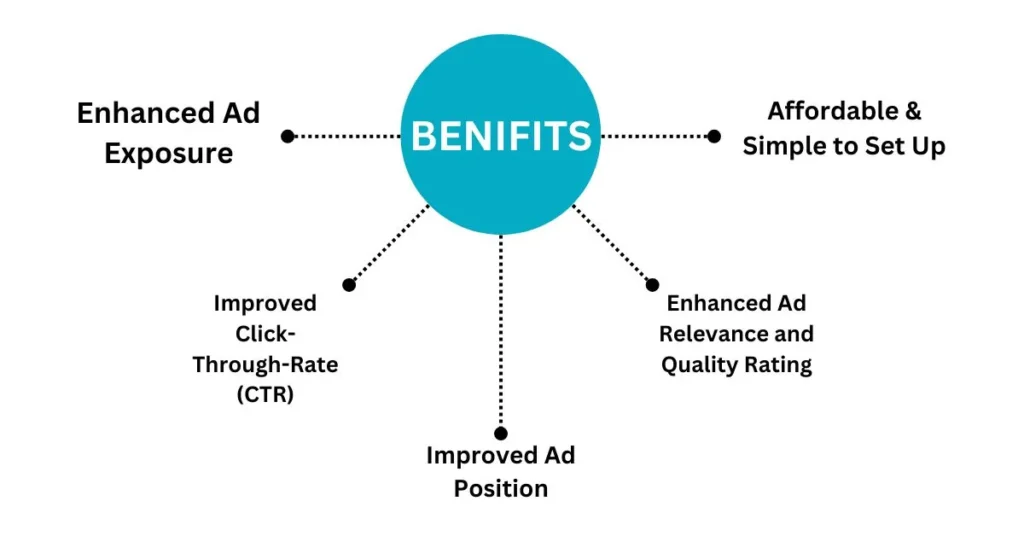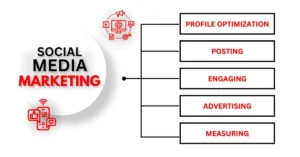
Pay-per-click (PPC) advertising proves itself as the top approach within digital marketing to deliver precise traffic while simultaneously boosting brand exposure and highly qualified prospects. PPC stands separate from organic marketing since it provides businesses with instantaneous customer interaction through targeted advertisement placement on search engines and social media networks. The proper execution of PPC allows businesses to track measurable ROI, which makes it a first-rate option for companies big and small.
The digital marketing landscape requires marketers and business owners as well as entrepreneurs to develop PPC expertise because it represents the essential method to optimize their online advertisement campaigns. An organized PPC marketing strategy allows companies to reach appropriate customers during precise times and manage their financial resources while measuring results and enhancing advertising approaches on a perpetual basis.
Table of Content
- 1 What is PPC?
- 2 The Difference Between PPC and Organic Marketing
- 3 How Google Ads Works: A Beginner’s Guide
- 4 Introduction to Bing Ads: What You Need to Know
- 5 The Basics of Keyword Match Types in PPC
- 6 The Role of Ad Extensions in PPC Campaigns
- 7 Understanding Quality Score in Google Ads
- 8
- 9 Common PPC Terms Every Marketer Should Know
- 10 The Pros and Cons of PPC Advertising
- 11 Case Studies: Successful PPC Campaigns
- 12 Conclusion
What is PPC?
Our PPC guide represents an advertising technique in which users need to pay a fee every time someone clicks their ad online. Through PPC, you acquire website visits instead of growing your traffic through the natural improvement of your search engine rankings (SEO). PPC primarily refers to search engine advertising through Google Ads and Bing Ads and is a suitable tool for marketing across social media networks, including Facebook, Instagram, and LinkedIn.
Here’s how PPC works:
- Advertisers create ads for their products or services.
- Ad placement happens on search engines or websites that allow PPC ads.
- Users click on ads, and the advertiser pays for that click.
- The amount paid is determined by factors such as the competitiveness of keywords, the quality of the ad, and the relevance of the ad to the searcher’s query.
Our PPC guide businesses to participate in balanced marketing strategies, which let them reach customers through higher search engine placements and selected target audiences.
The Difference Between PPC and Organic Marketing
Search engine visibility enhancement is a common goal between PPC and organic marketing, yet they display essential distinctions in their operation.
Cost Structure
- PPC: You must pay for a click from any person who clicks on your advertising content.
- Organic SEO: You will not pay for each click. Through content creation and link-building strategies, your website can naturally rise to search engine rankings over an extended period rather than an immediate payment.
Speed of Results
- PPC: Provides immediate results. Your PPC campaign will start showing results when you launch it by appearing on search engines within minutes or hours.
- Organic SEO: The process of results visibility through organic SEO takes time since search engines require content indexing before determining document relevance.
Sustainability
- PPC: Your presence on the platforms ceases as soon as you suspend your advertisement payments.
- Organic SEO: Your website receives continued site traffic through organic SEO after optimization completion, as long as you keep maintaining your rankings.
Targeting
- PPC: User targeting capability at PPC involves options to select location, device type, time of day, and audience demographic aspects.
- Organic SEO: Search algorithms control the success of your organic SEO efforts through keyword selection and their recognition of such keywords.
Cost Efficiency
- PPC: The expenses become high when operating in competitive industries. Essay Cost Per Click depends on factors, which include bid strategy, together with keyword competitiveness and quality score.
- Organic SEO: Organic SEO provides long-term cost efficiency since click fees are nonexistent, yet demands high time and effort investments.
The PPC guide represents valuable strategies that multiple successful businesses use together to expand their reach.
How Google Ads Works: A Beginner’s Guide

Businesses use Google Ads as a prominent PPC platform to display their content on Google search results pages, together with their partner websites. Below are the sequential steps at work on the Google Ads platform:
Create a Google Ads Account
The first step in PPC guide is account creation at Google Ads and a clear definition of advertising targets. Users can choose search ads, display ads, shopping ads and video ads through the Google Ads platform.
Choose Your Keywords
Choosing holding keywords is the necessary next step before proceeding. This selection needs to match your business to your audience. The auction system of Google Ads shows ads depending on bidding rates and how well your advertisements perform.
Create Your Ad
You must develop an effective ad following keyword selection. Your ad creation demands attention-grabbing headlines and convincing copywriting, together with page content consistency for the advertisement.
Set Your Budget
Google Ads provides budget control through daily as well as monthly expenditure limitations that users can set independently. Your campaigns can be tested effectively since Google Ads enables you to establish budget limits that stop overspending.
How to Optimize and Monitor Performance?
You can track your ad performance once it goes live, which enables adjustments according to the obtained results. Through its analytics system, Google Ads enables you to track metrics that include impressions and clicks as well as conversions and ROI (return on investment).
Achieving a high ROI demands proper optimization of your Google Ads campaigns for businesses wanting to boost their Google visibility.
Introduction to Bing Ads: What You Need to Know
The search engine advertising market belongs to Google Ads, yet Bing Ads (now Microsoft Advertising) provides a robust option, especially to businesses focusing on different user segments. Microsoft Advertising functions like Google Ads with distinctive benefits that customers should consider.
Key Features of Bing Ads:
- Lower CPC: Bing Ads delivers lower cost per click than Google Ads, which provides an appealing solution for businesses that have spending constraints.
- Different Audience: Older users prefer Bing as their search engine, while the search engine maintains its strong market position across the US, Canada, and the UK.
- Integration with Microsoft Products: Bing Ads lets users manage their ads via a complete integration of their product suite with Microsoft software platforms.
Bing Ads provides businesses with an excellent option to expand their pay-per-click approach while specifically engaging with a distinct user base.
The Basics of Keyword Match Types in PPC
The process of choosing the correct PPC keyword match types remains essential to display advertising for appropriate search queries. The essential keyword-matching methods consist of the following categories:
Broad Match
- Ads show for any search that includes your keyword or similar variations.
- Example: Your ad will display when users search for either “buy sneakers” or “running footwear” after targeting “shoes.”
Phrase Match
- Ads show for searches that include your exact keyword phrase in the same order, with additional words before or after.
- Example: If you target “women’s shoes,” your ad could appear for “buy women’s shoes online.”
Exact Match
- Ads show only when the search query exactly matches your keyword, with no additional words.
- Example: Your advertisement through Google Ads will exclusively display when someone searches for “women’s shoes.”
Negative Match
- Ads exclude searches with specific terms you don’t want to target.
- Example: If you add “cheap” as a negative keyword, your ad won’t show for searches like “cheap women’s shoes.”
Your ad targeting results depend heavily on selecting appropriate match types that help control financial investment and reach a relevant audience.
The Role of Ad Extensions in PPC Campaigns

Additional pieces of information called Ad extensions accompany your PPC advertisements. Your potential customers gain better visibility into your ads and increased effectiveness through additional details that ad extensions supply. PPC content expands using various extensions, which include the following options:
Sitelink Extensions
- They help you link users from your advertisement to particular web pages featured on your site.
Call Extensions
- Users can contact you by phone through your ad extension, which includes a direct call ability.
Location Extensions
- Display your business address when customers need to locate your physical location.
Callout Extensions
- The text must be enhanced to emphasize special features and offers.
Price Extensions
- Your advertisement should show the prices for your products and services directly.

Ad extensions implemented efficiently boost the click-through rate (CTR), which leads to enhanced performance of PPC campaigns.
Understanding Quality Score in Google Ads
Google employs a Quality Score to evaluate the relevance, together with the quality of your PPC advertisement elements and landing page content. The position and expense of your ads depend heavily on Quality Score, which functions as a vital metric in PPC marketing.
Key Factors Influencing Quality Score:
- Expected Click-Through Rate (CTR): Users tend to click your advertisement when your CTR satisfies their expectations.
- Ad Relevance: Your ad must align closely with the user’s search purpose.
- Landing Page Experience: What is the quality of user interaction between your landing page and advertising materials?
Improving your Quality Score enables better CPC management and more favorable ad placement, through which you obtain more clicks and enhance ROI.
Common PPC Terms Every Marketer Should Know
Understanding PPC advertising terminology leads to success in this advertising strategy. Within PPC advertising, you will come across several standard terms, which include:
CPC (Cost Per Click): Your payment for every click your advertisement receives.
CTR (Click-Through Rate): After viewers encounter your ad, approximately how many people will click it?
Impressions: An ad appears each time it gets shown to potential viewers.
Conversion Rate: The metric measures how many users reach the objective goal, like making a purchase.
ROI (Return on Investment): Your PPC campaign’s profit margin can be expressed through its ROI.
The Pros and Cons of PPC Advertising
Pros:
- Instant Traffic: PPC enables your business to establish quick website visibility through traffic delivery.
- Targeted Reach: You can select your advertising targets through specifications of location and device type, as well as interest categories.
- Measurable Results: PPC generates specific business analytics that enable you to monitor both your marketing campaign results and your Return on Investment (ROI).
Cons:
- Cost: The costs associated with PPC tend to increase dramatically when industries become highly competitive.
- Continuous Investment: Once payment stops, the advertisements automatically suspend their operation.
- Complexity: Proper PPC campaign success depends on continuous management alongside optimization efforts.
Case Studies: Successful PPC Campaigns
Case Study: A Local Restaurant
- Through Google Ads, the restaurant aimed its promotion at nearby customers, which resulted in a 40% increase in local customers during those two months.
Case Study: E-commerce Store
- Through Facebook Ads, the online clothing store targeted users who visited their website without buying anything, which boosted their sales by 25%.
Conclusion
Businesses at every scale can use PPC advertising to boost visitor numbers and extract more leads, which leads to increased sales numbers. You can maximize your investment return through our PPC guide by learning its basic concepts as well as choosing proper keyword matches and campaign optimizations.
PPC requires persistent campaign testing together with optimization steps while performing continuous monitoring. Mastering PPC stands as the essential key to keeping businesses competitive in the current digital market, regardless of their choice between Google Ads, Bing Ads, or social media platforms.
Featured Blogs

Social Media Marketing Basics: A Complete SMM Guide
Having success in modern digital marketing requires social media activity as a basic necessity for businesses that aim to expand...

Content Creation Techniques: A Comprehensive Guide for Content Marketing
Current content marketing exceeds the traditional limitations of writing several blog posts and sharing content on social media. You need...
Faran Bilal
Faran Bilal is a results-driven PPC and email marketing expert with a passion for helping businesses maximize ROI, generate high-quality leads, and drive conversions. With years of experience in Google Ads, Facebook Ads, and data-driven email campaigns, Faran excels in crafting targeted strategies that deliver measurable results. As a contributor to DigiPro, Faran shares expert insights, proven tactics, and in-depth guides on paid advertising, audience targeting, and email automation. Whether it's optimizing ad campaigns for better performance or designing high-converting email sequences, Faran is committed to empowering businesses with actionable marketing strategies. 📢 Follow Faran Bilal for the latest PPC & email marketing trends!
 Limited Spots Available! Apply Now!
Limited Spots Available! Apply Now!  Experience top-quality learning before you commit!
Experience top-quality learning before you commit!
Links will be automatically removed from comments.